Cannabis itself started a green revolution, but not in the ways you might think. A new movement is taking root – one that’s firmly planted in sustainability. As cannabis fans and industry experts mature, it’s not just about the high anymore; it’s about the planet we call home. From eco-conscious cultivation to innovative packaging, we’re breaking down how cannabis and other industries embrace sustainability to light up a greener future.
From Ancient Fibres to Modern Sustainability: A History of Hemp
For centuries, hemp has been used all over the world. From humble beginnings as a versatile plant used in everything from medicines to animal feed, it’s always been a sustainable, renewable resource. Throughout history, hemp fibres were meticulously spun into textiles and made into comfortable, durable clothing.
You could also find it in the hardy ropes and sails of ancient vessels and the canvases that bore witness to the strokes of artists like Rembrandt and Van Gogh. Before modern machinery, hemp was even used for paper, and evidence suggests that the earliest drafts of the Declaration of Independence were penned onto it.
Yet, a shadow fell upon what could have been a sustainable legacy during prohibition. The criminalisation of hemp made it virtually impossible to grow or use cannabis and placed its industrial potential in a straitjacket. When cannabis was vilified, all of the progress made in uncovering its practical uses was put on the back burner. Consequently, we switched to trees, contributing to the deforestation crisis and environmental stresses we’re witnessing today.
While it’s a hot topic, the winds of change have stirred in recent years, and things are cooling down. With weed back on the menu, the stage is set for its triumphant return across all sorts of industries. In fact, the newness of the emerging cannabis industry is a great sign. Industry leaders are more conscious of their businesses’ impact and are actively looking for ways to support a sustainable future.
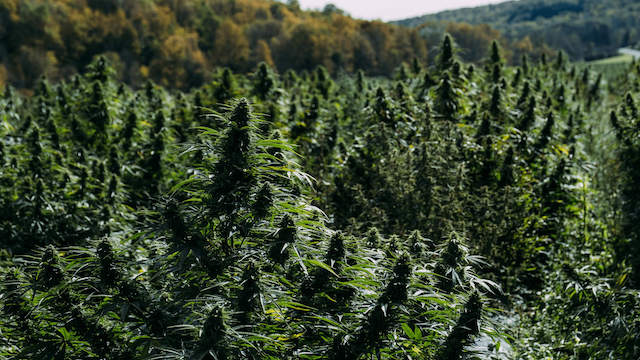
How Hemp is Used
The resurgence of industrial hemp has etched an inspiring narrative of revival and progress. With the environment being a key concern, hemp is considered a more sustainable, renewable resource that may replace some of the old-fashioned methods we’ve used historically.
There’s a bit of a renaissance taking place. More and more countries are embracing cannabis, and even with the recreational aspect of it, many industries have fewer legal restrictions preventing them from exploring the potential of these versatile plants.
Cannabis is a rapidly renewable resource, requiring minimal water and pesticides to flourish. This starkly contrasts the slow growth of trees, presenting hemp as an environmentally responsible choice that very well could offset our resource-intensive practices.
Yet, the allure of hemp is more than how efficient it is. Experts believe it may potentially combat a few of the symptoms of climate change. As cannabis plants grow, they absorb carbon dioxide from the atmosphere and act as a carbon sink. As more and more farms switch to hemp, there are fewer pesticides, water demands, and a reduced carbon footprint.
The true might of hemp, however, is its versatility. From clothes to construction materials that shape our homes, hemp offers a biodegradable, natural solution that might support our efforts in reducing the aftermath of years spent harming the environment.
Countries Charting a Sustainable Course
There’s a lot to love about cannabis plants, and we’re starting to use them for the better, thanks to their versatile nature. However, there are a lot of unsustainable practices out there. As other industries grapple with ecological challenges, the cannabis sector has not been immune to resource-intensive methods, excessive waste generation, and carbon emissions. Most businesses, driven by profit and convenience, often overlook the long-term ecological costs of their actions.
However, amidst these concerns, many regions are spearheading the charge towards environmentally conscious cannabis production. A few countries are already leading this sustainability movement with cannabis.
Canada, for example, encourages cannabis growers and processors to focus on sustainable practices, waste reduction, and energy-efficient operations. As one of three countries with a government-sponsored cannabis program, it joins The Netherlands and Israel.
The Netherlands, which has always been known for its sustainable farming practices, is pioneering energy-efficient indoor cultivation practices. Israel also leads the world in cannabis research.
In the United States, states like California are embracing solar energy, water-saving technologies, and organic farming practices. While the laws there vary from state to state and city to city, many forward-thinking companies in states like Oregon and Colorado are focusing on doing their parts to reduce waste and energy consumption, save water, and use recyclable materials for packaging.
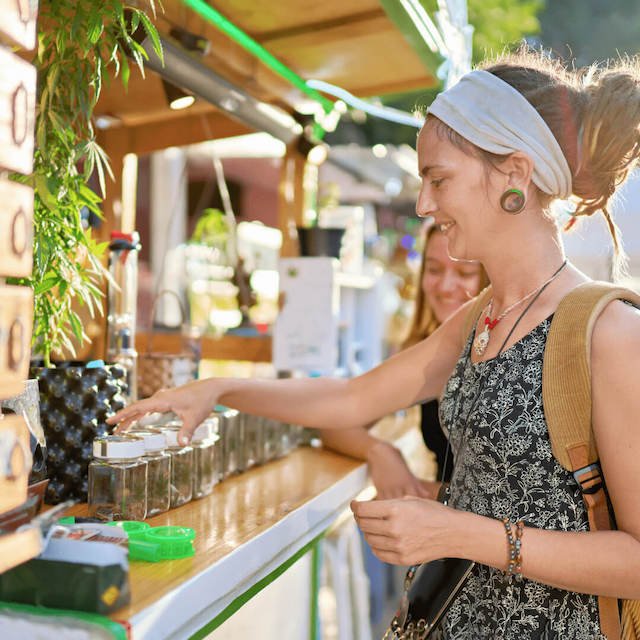
Further, evidence suggests that some countries might soon work against deforestation by encouraging farmers to grow hemp to prioritise sustainable land use without pushing farmlands deeper into old-growth forests.
As we collectively navigate the intricate dance between progress and sustainability, these regions pave the way for other communities to get on board the sustainability train, offering insights into the transformative power of merging industry practices with ecological mindfulness.
Sustainability in the Cannabis Industry
While sustainability in the cannabis industry is at the helm in many different countries, the question itself is that of progress. While the plant itself is renewable, some bad actors in the cannabis industry have generated more waste and increased their carbon footprints.
For example, disposable vape cartridges are pouring lots of plastic and batteries into landfills when people don’t take the proper care to recycle them responsibly. In many dispensaries, we’re still seeing single-use plastics in exit bags and packaging materials. Some greenhouses aren’t using sustainable growing practices, and processing companies require chemicals and lots of energy to turn the crops into cannabis products.
But it’s not all doom and gloom. As more companies become conscious of the impact the cannabis industry is making on the environment, many are shifting to sustainable practices by utilising organic farming practices, energy and water-efficient grows, outdoor cultivation facilities, and biodegradable or recyclable packaging materials.
Organic Farming
One of the cornerstones of sustainable cannabis cultivation is the adoption of organic farming practices. Unlike conventional methods that rely heavily on synthetic pesticides and fertilisers, organic farming embraces natural solutions to nurture cannabis plants. By fostering a symbiotic relationship between plants, soil, and beneficial organisms, organic cannabis farms reduce chemical usage, mitigate soil degradation, and promote healthier ecosystems. This practice not only yields high-quality cannabis but also safeguards the surrounding environment from the detrimental effects of chemical runoff.
Energy-Efficient Indoor Cultivation
Indoor cannabis cultivation has long been criticised for its energy-intensive nature, especially since it’s expensive to run high-powered lights and cooling systems to provide the ideal environment for the plants.
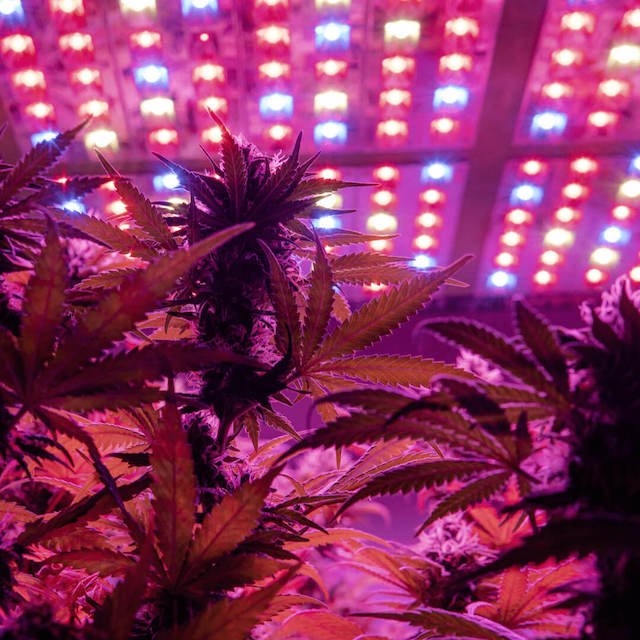
However, the industry is pivoting towards energy-efficient alternatives. Cutting-edge LED lighting systems, specifically designed for cannabis cultivation, are replacing traditional high-intensity discharge lamps. These LEDs provide optimal light spectrum for plant growth and consume significantly less energy, minimising the strain on power grids and reducing carbon emissions. Further, LED lights don’t give off anywhere near as much heat, so the cooling bill also dramatically decreases.
Sun-Grown Sustainability
In some places, indoor grows aren’t as popular as they used to be. By harnessing the natural power of the sun, outdoor cannabis operations significantly reduce energy consumption and environmental impact. Sun-grown cannabis benefits from the full spectrum of natural sunlight, resulting in robust plants that are often more potent and flavourful. Sun-grown cannabis is a sustainable option for plants that are destined to become concentrates or edibles, saving indoor plants for smokeable flowers.
Water-Wise Techniques
Water scarcity is a pressing global concern, but sustainable cannabis cultivation is emphasising water-wise practices. Drip irrigation and hydroponics systems are replacing traditional methods, delivering water directly to the roots with minimal wastage. Additionally, the reuse of water through recycling systems reduces water consumption, alleviating the strain on local water resources. These techniques not only conserve water but also contribute to the overall resilience of cannabis crops in the face of changing climate conditions.
Biodegradable Packaging Materials
One of the most significant strides in sustainable packaging is the adoption of biodegradable materials. Traditional single-use plastics have been a significant contributor to pollution and environmental degradation, even in the cannabis industry. However, the cannabis industry is championing a shift towards bioplastics derived from renewable sources, including hemp. These bioplastics and biodegradable cardboard break down naturally, reducing waste in landfills and offering a more responsible solution for packaging needs.
Refillable and Reusable Packaging
Another sustainable packaging innovation gaining traction is the concept of refillable packaging, which you see at some grocery stores. This approach challenges our throwaway culture and encourages people to reuse and recycle cannabis containers. The cannabis industry is incorporating refill programs allowing customers to return empty containers in exchange for refilled products. This initiative curbs packaging waste and fosters a more circular economy, where resources are conserved and reused, minimising the need to continuously produce new packaging materials.

A trend gaining momentum in the cannabis industry is the promotion of creative reuse of packaging materials. Cannabis companies are inspiring consumers to repurpose their packaging containers for various DIY projects, such as storage solutions or arts and crafts. By upcycling packaging materials, the industry is encouraging consumers to think beyond single-use and find new, imaginative ways to extend the life of their packaging. This approach not only reduces waste but also fosters a sense of community engagement and innovation.
How Other Industries Are Sustainably Using Cannabis
The cannabis industry is practising sustainability well, but other industries are also able to use hemp and cannabis as eco-friendly alternatives to a few of the unsustainable practices we’ve relied on historically. From clothes and biodegradable packaging to construction materials, let’s look into the diverse ways different sectors are harnessing the power of cannabis to paint a greener future.
Hemp Clothing
While synthetic fibres were once popular for their durability, hemp is changing the game. Hemp garments last much longer than synthetic fibres and boast natural antibacterial properties, mould and UV rays resistance, and exceptional durability.
Synthetics are made from plastic-like materials, which come with their own ramifications and find their way into landfills. On the other hand, hemp is a renewable resource with the added perk of being biodegradable.
Cotton is also renewable and biodegradable, but growing and processing it has a higher carbon footprint. The cultivation of hemp demands fewer pesticides, herbicides, and fertilisers than conventional cotton, curbing water pollution, soil degradation, and chemical exposure. Hemp’s rapid growth cycle also absorbs carbon dioxide, making it a beneficial switch in the fight against climate change.
To take it a step further, switching clothing to hemp materials could help us shift away from the fast fashion industry’s wasteful and environmentally damaging practices. By choosing hemp apparel, we actively contribute to environmental preservation while uplifting the well-being of the people who make it.
Cannabis Packaging
Plastics and styrofoams are a nuisance that has drastically contributed to environmental woes. However, cannabis can also be used to make eco-friendly packaging materials.
Hemp fibres can be sustainably processed into biodegradable and compostable packaging materials, potentially drastically reducing waste and pollution. Unlike their traditional plastic counterparts, hemp-based plastic or paper materials naturally degrade, mitigating non-biodegradables’ persistence in landfills. Upon disposal or composting, hemp packaging reverts to organic matter, enriching the soil and completing a regenerative cycle.
The prospects of hemp-based packaging are monumental, particularly in industries heavily reliant on single-use plastic packaging, such as food and cosmetics. Adopting hemp packaging solutions could significantly reduce environmental footprints, forcing a shift towards a circular economy where resources are optimally used and replaced within the environment.
Hemp Insulation and Building Materials
A lot of the waste we make and the resources we use are directly tied to expansion and growth in infrastructure. The demand for greener alternatives to reduce carbon footprints and dependence on non-renewable resources is at an all-time high. However, hemp can even be used here.
Cannabis insulation has excellent thermal and acoustic insulation properties, which could regulate temperatures and reduce energy consumption. Its breathability and antibacterial properties help prevent moisture accumulation and mould growth, which support healthier indoor environments.
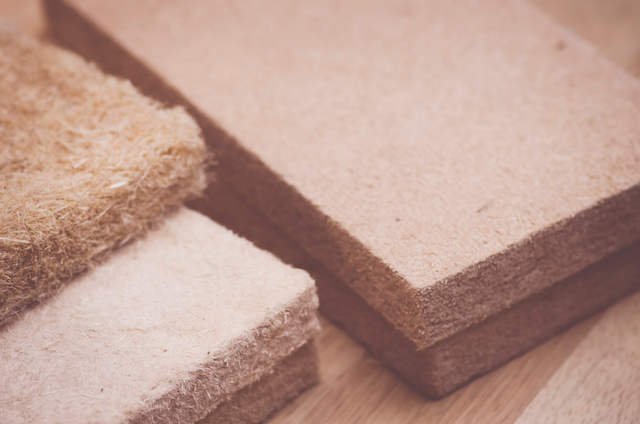
Beyond insulation, hemp is also being explored as a construction material. Hempcrete, a bio-composite that utilises hemp’s inner woody core mixed with limestone and water, provides insulation with lightweight construction. Hemp fibre can also be woven into mats for wall construction, imbuing strength, durability, and insulation. Hemp fibreboard, another application, is a sustainable alternative to wood-based counterparts, promoting responsible forestry practices.
Research is also being conducted on the possibility of hemp serving as reinforcement in composite materials like polymers, furnishing lightweight and strong structural components with fewer conventional building materials. Its renewable sourcing, insulation prowess, and strength make hemp an invaluable ally for eco-conscious builders.
To a Greener Tomorrow
The call for sustainability and eco-friendly practices is approaching dire levels. We face many environmental challenges, and our actions today can make or break the future. Our planet’s resources are finite, and we live in a delicate ecosystem. Unsustainable business practices driven by short-term gains are harmful and lead to deforestation, pollution, climate change, and a host of other interconnected issues.
The average person can make a difference, but a lot of the work does indeed fall on larger companies to be aware of the challenges we’re facing on our planet and actively choose to adopt eco-friendly practices to safeguard our future for the long term. Eco-friendly cultivation methods, packaging solutions, and forward-thinking approaches are far beyond a fleeting trend; they underscore our collective responsibility to nurture and restore our planet’s health.
As the cannabis industry gains traction, it’s at a pivotal juncture. The potential for sustainable hemp alternatives to permeate our lives and whether or not the cannabis industry will work towards reducing waste and doing less harm remain a question mark, but the signs are undeniably hopeful. We stand at the threshold of a more sustainable world where innovation marries ecological responsibility. We envision a future where cannabis not only shapes industries but transforms the narrative of how we interact with our planet.
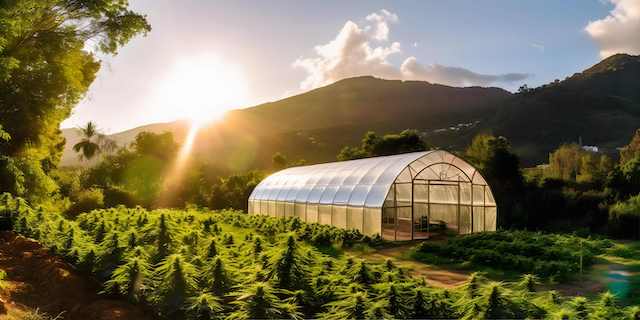
From sustainable clothing options that defy the throwaway culture to packaging that decomposes into fertile soil, hemp is asserting itself as a sustainable alternative that confronts the mounting environmental and sustainability challenges of our times. We find ourselves on the precipice of embracing a brighter, greener chapter— where industrial cannabis takes the lead in ushering in a more sustainable and prosperous future.


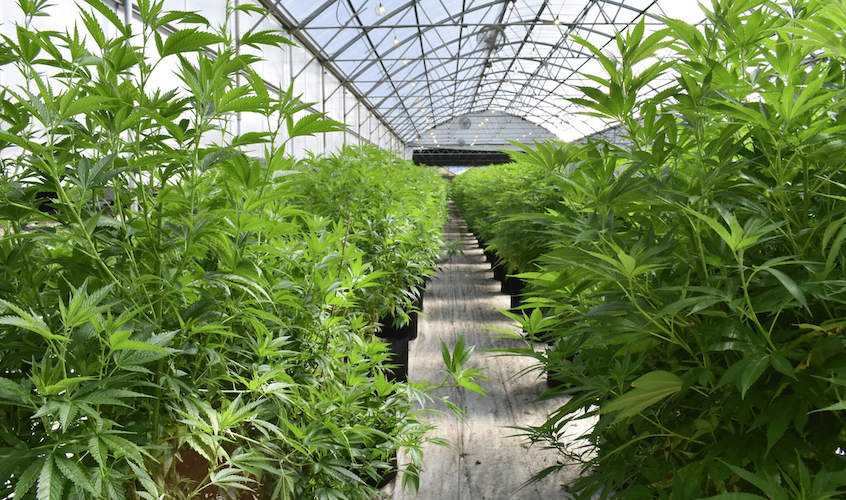





Leave a Comment